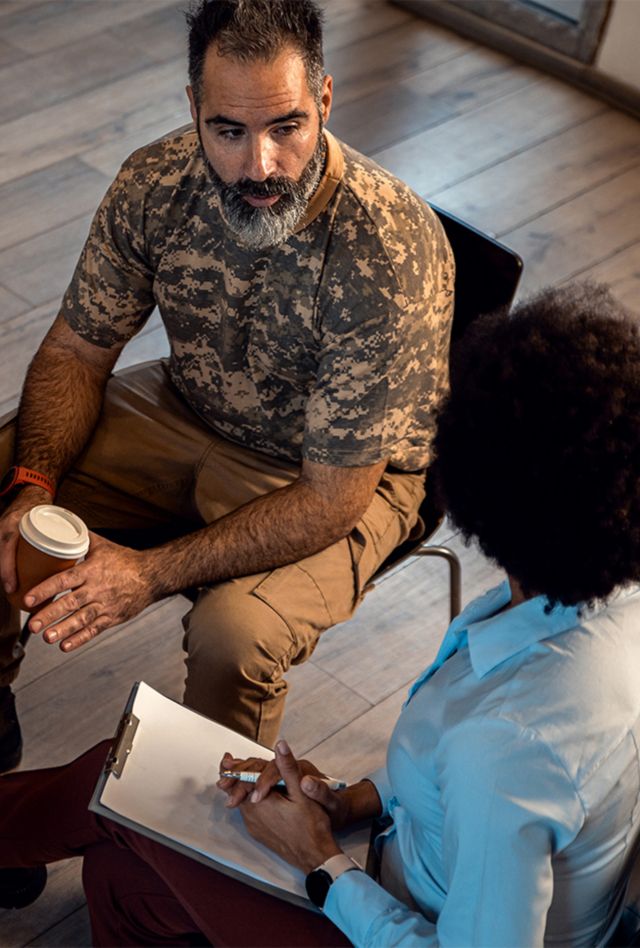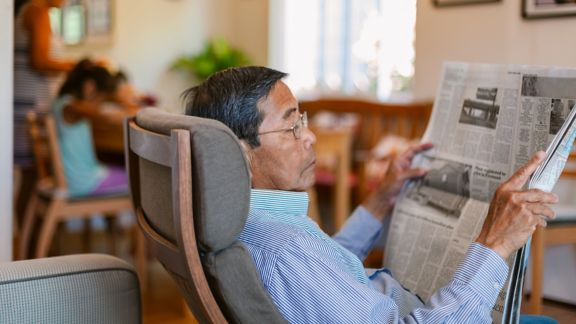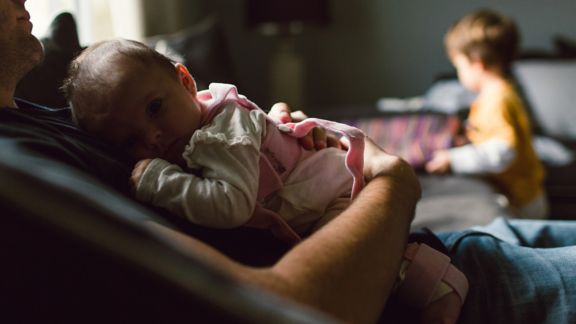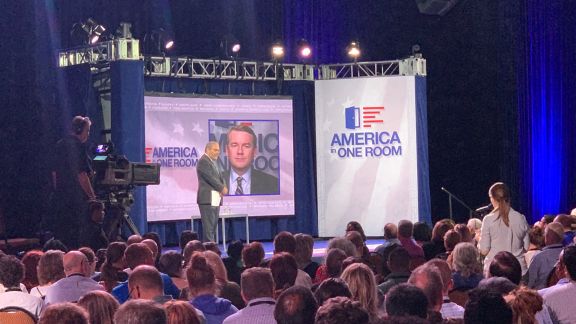Q&A: Closing the Veteran Data Gap

In This Q&A:
Executive Director & Senior Vice President, AmeriSpeak at NORC
Senior Research Scientist, Director of Survey Panels at RAND
Giving voice to former U.S. service members. Explore the solution.
October 2025
NORC’s David Dutwin and RAND’s Robert Bozick discuss the complexities of surveying Veterans, the innovative approach behind the Veterans Insight Panel (VIP), and what robust, representative data will mean for Veteran-serving agencies and organizations. Their insights illuminate both the challenges and the exciting research and policy opportunities that the VIP unlocks for the Veterans affairs field.
Gathering high-quality data about Veterans—their well-being, challenges, and service experiences—has been a persistent challenge for policymakers and researchers alike. Too often, surveys sample convenient sets of people, or are limited to those enrolled in VA programs. That risks overlooking the diversity of the broader Veteran community. Younger, rural, and female Veterans can be left out of research that drives crucial policy and funding decisions.
The Veterans Insight Panel, a new collaboration between NORC at the University of Chicago and RAND, is poised to change that landscape. Drawing on deep methodological expertise in polling and a commitment to inclusive, representative sampling, the VIP is designed to deliver trustworthy, actionable data about America’s Veteran population—reaching across branches, eras, and demographic groups and prioritizing Veterans’ voices in the process.
There are some well-documented gaps in research on Veterans. For instance, studies often use those who are enrolled with the VA to represent all Veterans. Will the VIP be able to fill this gap?
DAVID DUTWIN: VA-enrolled Veterans only comprise about half of all Veterans, so surveys that rely solely on this subset run a substantial risk of bias. The VIP recruits Veterans through a random sampling process. First, all persons aged 18 and older are recruited to a general population panel. Any Veterans identified in those households are then invited to join the VIP.
Some categories of Veterans have been hard to reach, such as women or those living in rural areas. How has VIP overcome this? Or what else are you doing to get statistically valid insights into smaller demographic groups?
ROBERT BOZICK: Both NORC and RAND draw our samples from the full list of housing units in the United States. This gives us the opportunity to recruit panelists from regions and neighborhoods that can sometimes be overlooked in research. This is particularly relevant for Veterans living in rural areas as they have less access to VA offices.
DUTWIN: Two strategies in particular helped us maximize representation on the panel. First, we stratified the initial random sample. That allows us to oversample households in rural areas as well as households likely to include hard-to-reach populations, such as Latinos and low-income households. Second, we follow up with those who do not respond to telephone and mail with in-person visits. That increases the response rate, particularly among such hard-to-reach populations.
It’s increasingly recognized that research should be done with, not just about, Veterans. In what ways have Veterans actively contributed to the survey’s design and priorities?
DUTWIN: Veterans are more likely to trust and participate in research when they know the research tools were developed, at least in part, by other Veterans. NORC’s own Veterans Employee Resource Group (ERG) has been a crucial part of the thinking that went into creating the panel. Our ERG members are both Veterans and highly skilled experts in survey research, including research on Veterans. They have ensured that we pay careful attention to best practices, such as establishing trust and ensuring salience. More broadly, we follow the work of Veteran-led organizations to hear what advocacy and service groups are saying about Veterans’ unmet needs.
Many organizations claim broad representation, yet often rely on limited samples. What makes VIP’s approach unique in terms of sample size, methodology, and representativeness?
BOZICK: First and foremost, we rely on random sampling of all U.S. households to get as broad a reach as possible. However, we know that young people, and young men in particular, tend to ignore unsolicited survey requests. That means that experience of young Veterans who recently separated from the military are oftentimes missed. To address this challenge, we are working with Veterans-serving nonprofit organizations to recruit recently separated Veterans to supplement our random sampling approach.
The health and well-being of Veterans are multifaceted. What types of topics is VIP set to explore first? What do you envision tracking over time?
DUTWIN: Achieving a better understanding of employment and transition challenges for Veterans and their families are top priorities. Beyond that, we’re interested in how Veterans access different types of health care services, especially in community settings. The VIP can help us track how that is evolving. We also want to better understand how Veterans seek out care related to such things as mental health and substance use to see what if any barriers they are encountering. It’s also crucial to track the longterm health, interpersonal relationships, and economic trajectories of younger Veterans. One of the strengths of the VIP is its versatility, though, so we can pivot to answer research and policy questions that are top of mind.
BOZICK: Indeed, one of the cool things about the VIP is that it lets us study longstanding issues facing Veterans as well as provide the versatility to study emerging challenges and opportunities. Front and center for RAND, for instance, is the acquisition of skills and training to support recently separated Veterans in the labor market. One of the first studies we plan to do is on unemployment and underemployment among Veterans.
Were there specific research needs or motivations to create this new panel?
BOZICK: One of the challenges we have faced in undertaking research on Veterans is relying on data collected by other organizations—often for purposes other than understanding Veterans as a unique population. That really has limited the ability to do the type of comprehensive, policy-focused research that can improve Veteran well-being.
DUTWIN: Veterans increasingly have benefited from research into their experiences, needs, and goals. At the same time, the risk of bias is high when surveys rely on sub-optimal approaches, such as opt-in or convenience samples, or samples limited to existing lists of Veterans rather than randomly selected participants, which is the bedrock upon which high-quality survey research is built.
Participant trust is crucial in this kind of research. What measures are in place to protect respondent privacy and ensure that findings are communicated respectfully and transparently?
DUTWIN: The primary way to gain trust, which we take very seriously, is to do “good research.” That means, first, collecting only data that will be used to improve our understanding and support of Veterans in a meaningful way. Second, it means sharing our findings directly with the communities of interest as much as possible. We also are taking concrete measures to maintain trust. For instance we make sure the participants can easily check online about the legitimacy of the study. We also include endorsements from trusted leaders from the Veteran community in study materials we send out and tailor those materials to the Veterans we are trying to reach.
Are these data points going to be only for clients and policymakers, or will findings be shared publicly as well?
DUTWIN: NORC and RAND both operate with a mission to maximize the public release of data. Ultimately, our clients own their data and determine whether it is publicly released. However, most of our partners are government or nonprofit organizations that share our goal of making their data publicly available.
BOZICK: The VIP is dedicated entirely to improving the lives of Veterans and their families. Not only will we make all the findings we can publicly available, we will promote the survey results and insights to our organizations’ deep network of policymakers and Veterans advocates.
Suggested Citation
Dutwin, D. and Bozick, R. (2025, October 28). Q&A: Closing the Veteran Data Gap. [Web blog post]. NORC at the University of Chicago. Retrieved from www.norc.org.







